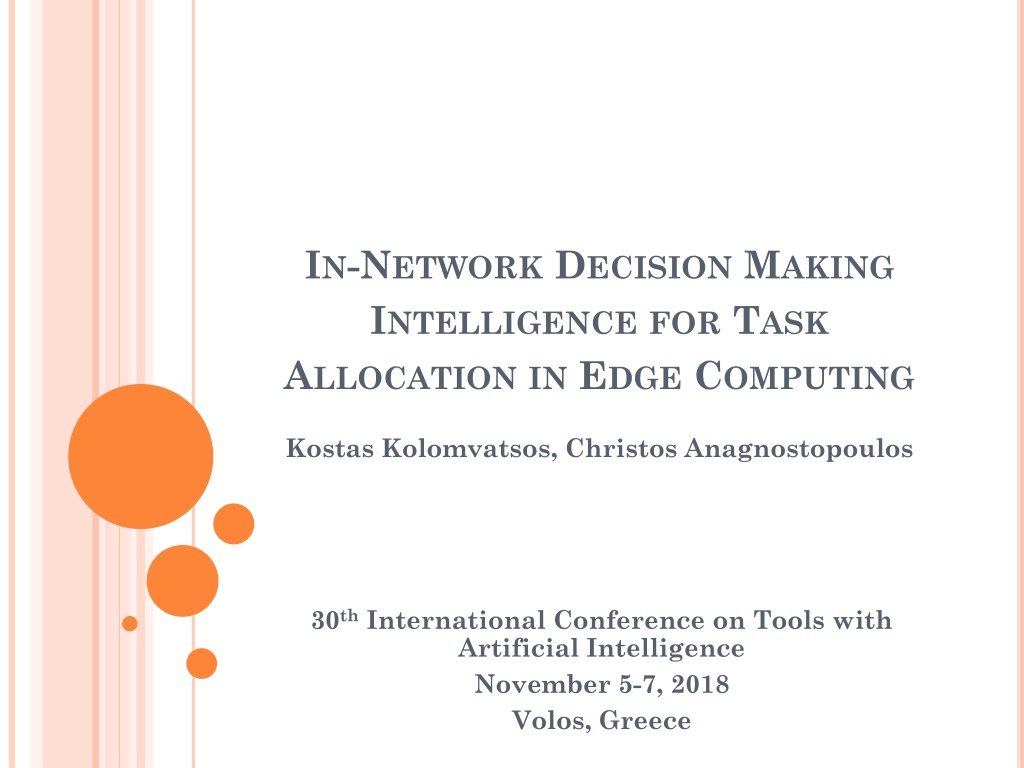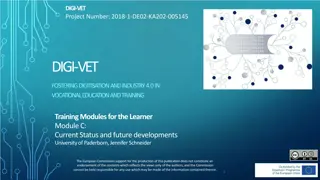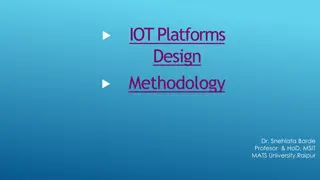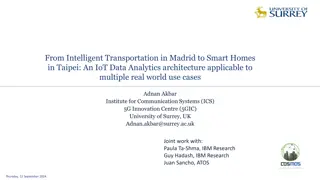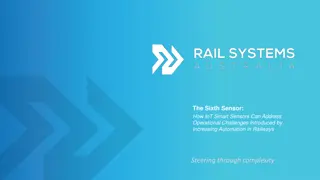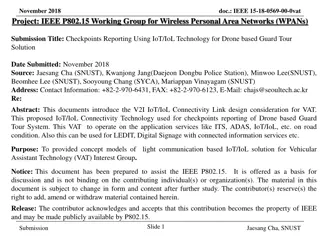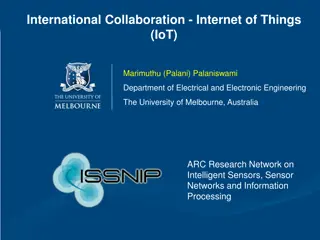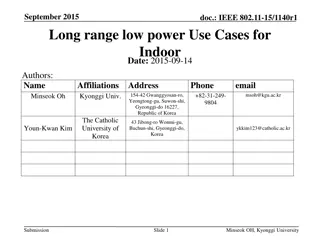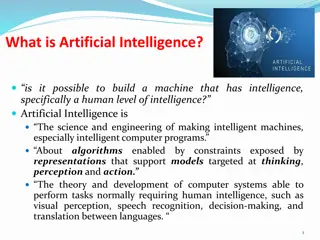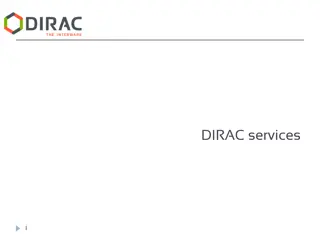Intelligent Task Allocation in Edge Computing for IoT Devices
"This study explores the utilization of in-network decision-making intelligence for task allocation in edge computing, focusing on challenges like latency and data migration. Techniques such as tasks allocation at the edge and autonomous tasks processing are discussed. The aim is to enable efficient data processing and analytics close to IoT nodes through autonomous decision-making by edge devices."
Download Presentation

Please find below an Image/Link to download the presentation.
The content on the website is provided AS IS for your information and personal use only. It may not be sold, licensed, or shared on other websites without obtaining consent from the author. Download presentation by click this link. If you encounter any issues during the download, it is possible that the publisher has removed the file from their server.
E N D
Presentation Transcript
IN-NETWORK DECISION MAKING INTELLIGENCE FOR TASK ALLOCATION IN EDGE COMPUTING Kostas Kolomvatsos, Christos Anagnostopoulos 30thInternational Conference on Tools with Artificial Intelligence November 5-7, 2018 Volos, Greece
OUTLINE Introduction Challenges Tasks Allocation Data Aware Mechanism Experimental Evaluation Conclusions and Future Work
INTRODUCTION Internet of Things (IoT) offers a vast infrastructure of devices Intelligent analytics are offered on top of data collected by IoT nodes, i.e., sensing and computing devices Nodes can become knowledge producers through local processing
INTRODUCTION Legacy techniques involve data processing at the Cloud Cloud supports centralized processing Problem: Increased latency Need for support time sensitive applications Solution: Edge Computing It applies local processing at the edge nodes
CHALLENGES Keep analytics processing close to nodes We try to limit the latency in providing responses Avoid data migration (increases the communication overhead) To provide analytics, nodes should execute a set of tasks
TASKS ALLOCATION AT THE EDGE Task management is used for distributing tasks among Edge Devices It should be done in an automated manner It is not necessary to explicitly define the capabilities or location of edge nodes Data are distributed as they are generated at different geographical places
AUTONOMOUS TASKS PROCESSING We focus on the behavior/status of each node (nodes context) Nodes may act autonomously and decide about the allocation of tasks (local execution or not) Our technique takes into consideration: Tasks characteristics Nodes characteristics The data present in every node
AUTONOMOUS TASKS PROCESSING Tasks may be delivered through streams They have specific characteristics, e.g., size, complexity, deadline, priority, software requirements Nodes also exhibit specific characteristics, e.g., load, throughput Nodes own a multidimensional dataset We should decide on the local execution of a task
DATA AWARE MECHANISM We can support an adaptive scheme to be fully aligned with nodes internal status, tasks requirements and the collected data Target: Develop a relevant decision mechanism Decisions autonomous manner should be taken in a distributed,
DATA AWARE MECHANISM Upon a task reception, nodes create the context vector Nodes load Tasks priority Available resources
DATA AWARE MECHANISM The mechanism takes into consideration the data present at the nodes Nodes decide: Local execution Execution in the group Execution at the Cloud
DATA AWARE MECHANISM Nodes exchange contextual information Such information will affect the decision making Every node calculates an information vector for every peer Data statistical difference The load The communication cost
DATA AWARE MECHANISM If a task will not be executed locally, it will be sent to a peer with: Similar data Low load Low communication cost If no peer is appropriate for executing the task, then send it to Cloud
DATA AWARE MECHANISM The decision making: Modeling the contextual vectors (for tasks) the information vectors (for peers) Probabilistic local task allocation Multi-criteria local task allocation
DATA AWARE MECHANISM Probabilistic approach We can adopt Bayesian inference Two classes: Local execution (C1) or not (C2) We build on a training dataset for classification Based on context vector for a task the classifier delivers the result
DATA AWARE MECHANISM Multi-criteria decision making We build an ordered list of information vectors (data for peers) We provide rankings for peers Ratings are calculated based on the information vectors The candidate with the highest score is selected to host the task
EXPERIMENTAL EVALUATION We assess The correct selection of tasks that will be locally executed (Aspect A) The correct identification of the appropriate peer when tasks is offloaded (Aspect B) The closeness of the result to the optimal solution (Aspect C) Metrics For Aspects A & B: Precision (P), Recall (R), F-Measure (F) For Aspect C: We create the ideal node and its information vector [min_load, min_comm_cost, min_data_distance] Closeness is represented by i, i.e., the Euclidean distance with the ideal node
EXPERIMENTAL EVALUATION Datasets Real dataset related to companies bankruptcy* Real dataset related to indoor environmental data** Training dataset We create 300 context vectors and best actions 65% of vectors indicate local processing 35% of vectors indicate tasks offloading We construct networking topology of 5,000 nodes * https://archive.ics.uci.edu/ml/datasets/qualitative bankruptcy ** http://db.csail.mit.edu/labdata/labdata.html
EXPERIMENTAL EVALUATION In multi-criteria optimized tasks allocation, we focus on the following scenarios (different weights for each criterion)
EXPERIMENTAL EVALUATION Results for Precision, Recall and F-Measure
EXPERIMENTAL EVALUATION Closeness with the ideal node
EXPERIMENTAL EVALUATION Closeness for load
EXPERIMENTAL EVALUATION Closeness for data
CONCLUSIONS AND FUTURE WORK Our sequential decision making manages to select the appropriate action for each task We manage to get efficient decisions related to the local processing We can select the best possible peer when tasks are offloaded Time-optimized decisions could increase the efficiency
Thank You!! Questions?
